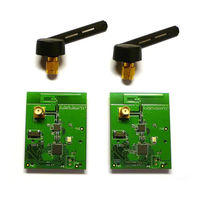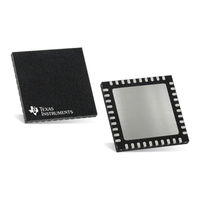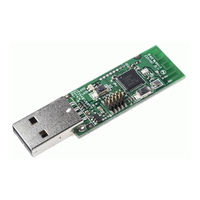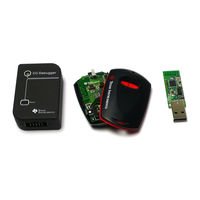Texas Instruments CC2541 Manuals
Manuals and User Guides for Texas Instruments CC2541. We have 10 Texas Instruments CC2541 manuals available for free PDF download: User Manual, Software Developers Manual, Application Manual, Quick Start Manual
Texas Instruments CC2541 User Manual (355 pages)
system-on-chip for 2.4Ghz
Brand: Texas Instruments
|
Category: Motherboard
|
Size: 2.14 MB
Table of Contents
Advertisement
Texas Instruments CC2541 Software Developers Manual (162 pages)
Bluetooth Low Energy
Brand: Texas Instruments
|
Category: Microcontrollers
|
Size: 5.78 MB
Table of Contents
Texas Instruments CC2541 Application Manual (36 pages)
Bluetooth low energy
Brand: Texas Instruments
|
Category: Transceiver
|
Size: 0.91 MB
Table of Contents
Advertisement
Texas Instruments CC2541 User Manual (44 pages)
Brand: Texas Instruments
|
Category: Microcontrollers
|
Size: 2.35 MB
Table of Contents
Texas Instruments CC2541 User Manual (40 pages)
Bluetooth Low Energy
Brand: Texas Instruments
|
Category: Microcontrollers
|
Size: 2.87 MB
Table of Contents
Texas Instruments CC2541 User Manual (29 pages)
Bluetooth low energy Advanced Remote Control Kit
Brand: Texas Instruments
|
Category: Remote Control
|
Size: 1.99 MB
Table of Contents
Texas Instruments CC2541 User Manual (24 pages)
Bluetooth Low Energy Advanced Remote Control Kit
Brand: Texas Instruments
|
Category: Remote Control
|
Size: 1.17 MB
Table of Contents
Texas Instruments CC2541 User Manual (18 pages)
Advanced Remote Control
Brand: Texas Instruments
|
Category: Remote Control
|
Size: 1.14 MB
Table of Contents
Texas Instruments CC2541 Quick Start Manual (7 pages)
Brand: Texas Instruments
|
Category: Other
|
Size: 0.68 MB
Texas Instruments CC2541 Quick Start Manual (7 pages)
Evaluation Module Kit
Brand: Texas Instruments
|
Category: Motherboard
|
Size: 1.33 MB









